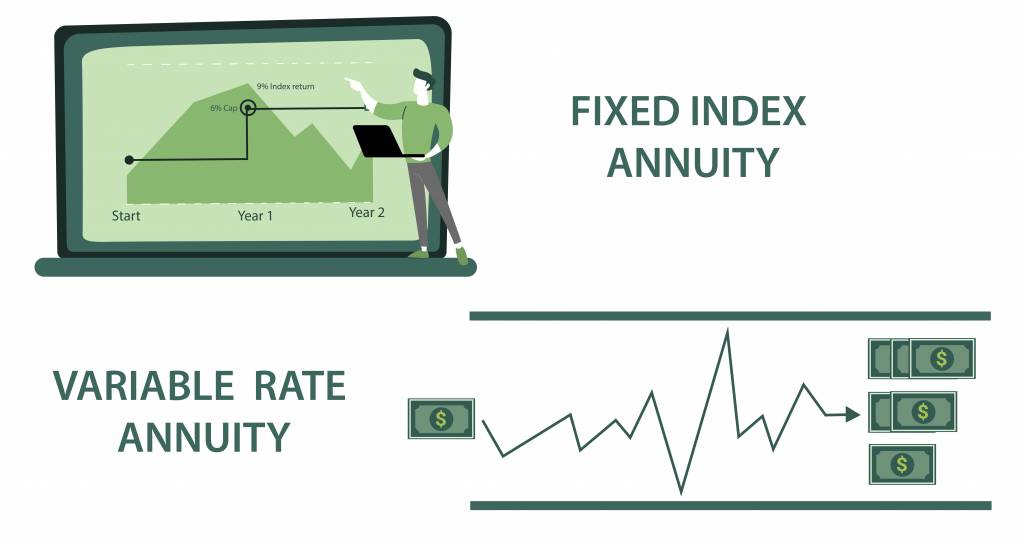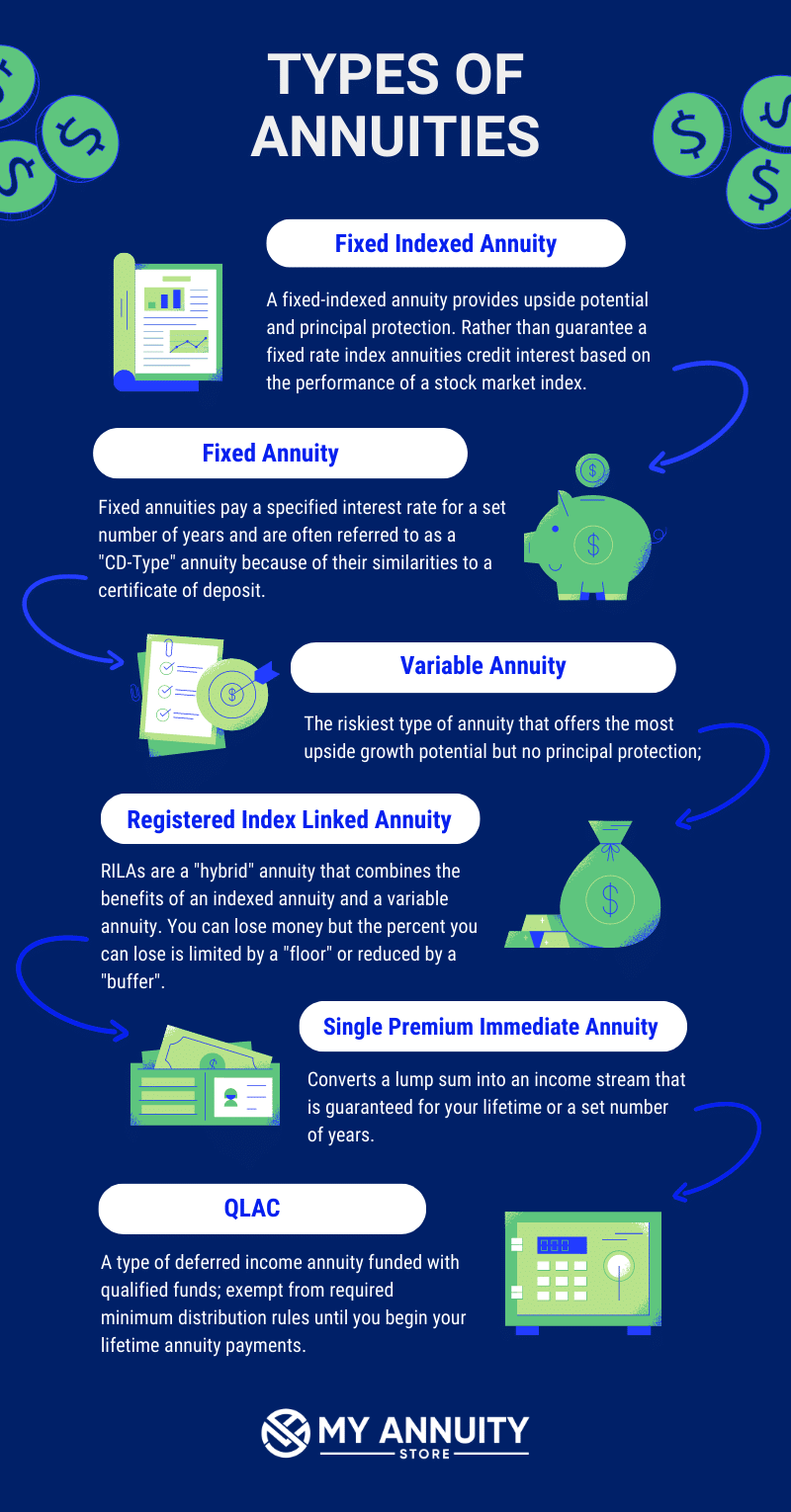Featured
Table of Contents
Simply as with a dealt with annuity, the proprietor of a variable annuity pays an insurance provider a round figure or series of repayments in exchange for the assurance of a series of future settlements in return. As mentioned over, while a taken care of annuity expands at an assured, consistent rate, a variable annuity grows at a variable price that depends upon the efficiency of the underlying financial investments, called sub-accounts.

During the build-up stage, possessions invested in variable annuity sub-accounts expand on a tax-deferred basis and are exhausted just when the contract proprietor withdraws those incomes from the account. After the build-up stage comes the income phase. With time, variable annuity properties ought to theoretically raise in value until the agreement proprietor chooses she or he wish to start withdrawing money from the account.
The most significant concern that variable annuities usually existing is high cost. Variable annuities have a number of layers of charges and costs that can, in aggregate, produce a drag of up to 3-4% of the agreement's value each year.
Breaking Down Your Investment Choices Key Insights on Your Financial Future Defining the Right Financial Strategy Pros and Cons of Fixed Interest Annuity Vs Variable Investment Annuity Why Choosing the Right Financial Strategy Is a Smart Choice How to Compare Different Investment Plans: A Complete Overview Key Differences Between Annuities Fixed Vs Variable Understanding the Risks of Long-Term Investments Who Should Consider Annuities Fixed Vs Variable? Tips for Choosing Fixed Index Annuity Vs Variable Annuity FAQs About Fixed Vs Variable Annuity Pros Cons Common Mistakes to Avoid When Choosing Variable Vs Fixed Annuity Financial Planning Simplified: Understanding Your Options A Beginner’s Guide to What Is A Variable Annuity Vs A Fixed Annuity A Closer Look at Fixed Index Annuity Vs Variable Annuity
M&E expense charges are computed as a percentage of the contract value Annuity providers pass on recordkeeping and other administrative costs to the contract proprietor. This can be in the kind of a level annual charge or a portion of the contract worth. Administrative costs might be consisted of as part of the M&E danger fee or may be analyzed separately.
These fees can range from 0.1% for passive funds to 1.5% or even more for actively taken care of funds. Annuity contracts can be personalized in a variety of means to offer the particular requirements of the contract proprietor. Some common variable annuity bikers consist of assured minimum accumulation benefit (GMAB), guaranteed minimum withdrawal advantage (GMWB), and guaranteed minimal earnings benefit (GMIB).

Variable annuity contributions offer no such tax reduction. Variable annuities tend to be highly inefficient cars for passing riches to the next generation since they do not take pleasure in a cost-basis change when the original agreement owner dies. When the proprietor of a taxable financial investment account passes away, the cost bases of the financial investments kept in the account are changed to reflect the marketplace prices of those financial investments at the time of the owner's death.
Highlighting Retirement Income Fixed Vs Variable Annuity Everything You Need to Know About Fixed Vs Variable Annuity Pros And Cons What Is Fixed Annuity Vs Variable Annuity? Advantages and Disadvantages of Different Retirement Plans Why Fixed Annuity Vs Variable Annuity Can Impact Your Future Deferred Annuity Vs Variable Annuity: How It Works Key Differences Between Different Financial Strategies Understanding the Key Features of Long-Term Investments Who Should Consider Strategic Financial Planning? Tips for Choosing Fixed Income Annuity Vs Variable Growth Annuity FAQs About Planning Your Financial Future Common Mistakes to Avoid When Choosing a Financial Strategy Financial Planning Simplified: Understanding Your Options A Beginner’s Guide to Smart Investment Decisions A Closer Look at Fixed Vs Variable Annuity Pros Cons
Consequently, beneficiaries can acquire a taxable investment portfolio with a "clean slate" from a tax viewpoint. Such is not the instance with variable annuities. Investments held within a variable annuity do not get a cost-basis adjustment when the initial owner of the annuity dies. This means that any type of built up latent gains will be passed on to the annuity owner's successors, together with the connected tax obligation worry.
One substantial concern associated to variable annuities is the potential for conflicts of interest that might feed on the part of annuity salespeople. Unlike a financial expert, that has a fiduciary obligation to make investment choices that benefit the client, an insurance policy broker has no such fiduciary obligation. Annuity sales are highly rewarding for the insurance policy experts that market them as a result of high upfront sales payments.

Lots of variable annuity contracts contain language which places a cap on the percentage of gain that can be experienced by specific sub-accounts. These caps prevent the annuity proprietor from fully taking part in a section of gains that could or else be appreciated in years in which markets create substantial returns. From an outsider's perspective, it would seem that capitalists are trading a cap on investment returns for the aforementioned guaranteed flooring on financial investment returns.
As noted above, surrender costs can badly limit an annuity owner's ability to relocate possessions out of an annuity in the very early years of the agreement. Additionally, while a lot of variable annuities enable agreement proprietors to withdraw a defined amount during the buildup phase, withdrawals beyond this quantity usually lead to a company-imposed charge.
Withdrawals made from a set rate of interest financial investment alternative might also experience a "market worth change" or MVA. An MVA adjusts the worth of the withdrawal to mirror any kind of adjustments in interest prices from the time that the money was invested in the fixed-rate option to the time that it was taken out.

Frequently, also the salesmen that sell them do not fully understand how they function, therefore salespeople often victimize a customer's emotions to offer variable annuities as opposed to the benefits and suitability of the products themselves. Our team believe that financiers must completely understand what they have and just how much they are paying to possess it.
Breaking Down Your Investment Choices A Closer Look at Fixed Annuity Or Variable Annuity What Is Fixed Annuity Or Variable Annuity? Pros and Cons of Various Financial Options Why Fixed Interest Annuity Vs Variable Investment Annuity Is a Smart Choice How to Compare Different Investment Plans: Simplified Key Differences Between Different Financial Strategies Understanding the Rewards of Long-Term Investments Who Should Consider Strategic Financial Planning? Tips for Choosing Tax Benefits Of Fixed Vs Variable Annuities FAQs About Planning Your Financial Future Common Mistakes to Avoid When Planning Your Retirement Financial Planning Simplified: Understanding Your Options A Beginner’s Guide to Smart Investment Decisions A Closer Look at Fixed Vs Variable Annuity Pros And Cons
Nonetheless, the same can not be stated for variable annuity properties kept in fixed-rate investments. These possessions lawfully come from the insurer and would consequently be at risk if the company were to stop working. In a similar way, any type of guarantees that the insurance policy company has actually agreed to provide, such as a guaranteed minimum income advantage, would remain in question in the occasion of a business failing.
Possible purchasers of variable annuities ought to understand and take into consideration the economic condition of the releasing insurance coverage company before getting in right into an annuity contract. While the advantages and downsides of various sorts of annuities can be questioned, the actual concern bordering annuities is that of viability. Put simply, the concern is: who should own a variable annuity? This inquiry can be challenging to respond to, given the myriad variations offered in the variable annuity world, however there are some fundamental guidelines that can aid financiers decide whether annuities should play a duty in their economic plans.
As the saying goes: "Buyer beware!" This post is prepared by Pekin Hardy Strauss, Inc. Low-risk fixed annuities. ("Pekin Hardy," dba Pekin Hardy Strauss Riches Administration) for informative objectives only and is not planned as an offer or solicitation for company. The info and data in this write-up does not constitute lawful, tax obligation, bookkeeping, financial investment, or various other professional recommendations
Table of Contents
Latest Posts
Analyzing Strategic Retirement Planning Key Insights on Your Financial Future What Is the Best Retirement Option? Benefits of Choosing the Right Financial Plan Why Indexed Annuity Vs Fixed Annuity Is
Analyzing Strategic Retirement Planning A Comprehensive Guide to Investment Choices What Is Variable Annuity Vs Fixed Indexed Annuity? Pros and Cons of Fixed Index Annuity Vs Variable Annuity Why Choo
Understanding Financial Strategies Key Insights on Your Financial Future Defining Fixed Index Annuity Vs Variable Annuity Features of Smart Investment Choices Why Choosing the Right Financial Strategy
More
Latest Posts